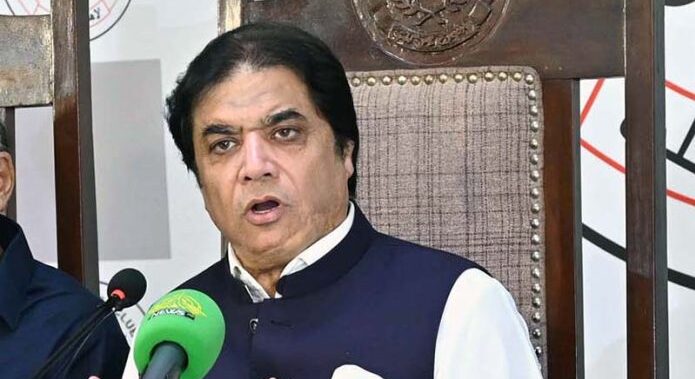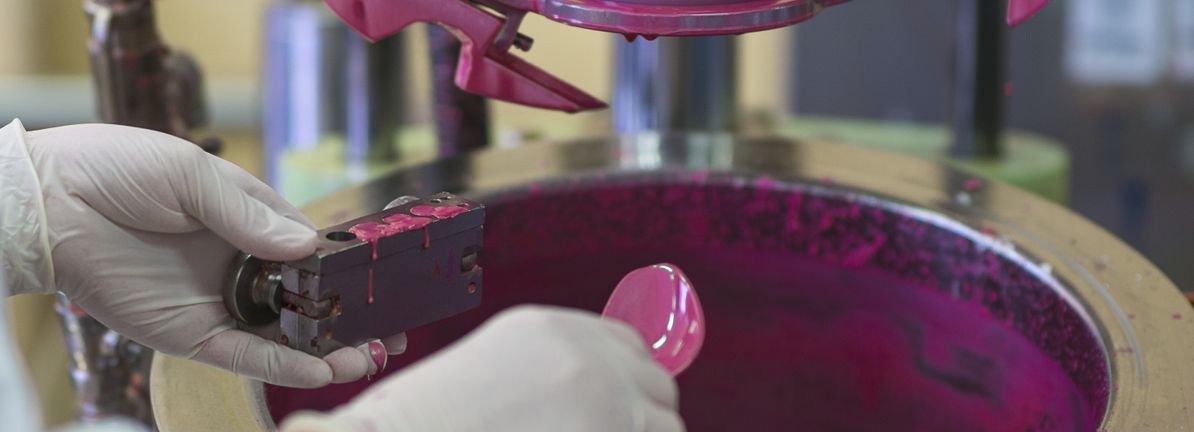- Most Gulf markets gain on US rate cut hopes; oil weighs on Saudi Reuters
- Most Gulf markets gain on earnings and oil Business Recorder
- UAE Stocks Inch Up As Global Factors Take Center Stage Finimize
- UAE markets gain on rate cut optimism Reuters
- Dubai Leads Gulf Rally As Emaar Unveils Mega Luxury Project Finimize
Author: admin
-
Most Gulf markets gain on US rate cut hopes; oil weighs on Saudi – Reuters
-
Infiltration from Afghan border thwarted; 25 terrorists killed, 5 soldiers martyred – samaa tv
- Infiltration from Afghan border thwarted; 25 terrorists killed, 5 soldiers martyred samaa tv
- Pakistan says five soldiers and 25 fighters killed in Afghan border clashes Al Jazeera
- 12 militants killed in KP operations; suicide vehicle destroyed
Continue Reading
-

Pakistan Railways modernization efforts gaining momentum: Hanif Abbasi
– Advertisement –
LAHORE, Oct 26 (APP):Minister for Railways Muhammad Hanif Abbasi has said that the process of modernizing Pakistan Railways and providing better facilities to passengers is continuing successfully.
Addressing a press conference…
Continue Reading
-
Researchers create the world’s smallest OLED pixel at 300×300 nm
Researchers from the Julius-Maximilians-Universität Würzburg (JMU) have managed to create the world’s smallest OLED to date, at only 300 x 300 nm. To create such small pixels, the researchers developed a novel metallic contact that allows…
Continue Reading
-

Game Preview: Pacers at Timberwolves – NBA
- Game Preview: Pacers at Timberwolves NBA
- Indiana Pacers vs Minnesota Timberwolves Spurs Preview and Prediction – Oct. 26 | 2025-26 NBA Season Sportskeeda
- Indiana Pacers vs. Minnesota Timberwolves NBA schedule, TV channel, radio, expert prediction…
Continue Reading
-

Russia tests nuclear-powered Burevestnik missile, military says
Russia has tested the nuclear-powered Burevestnik cruise missile, Moscow’s top general has said.
“We have launched a multi-hour flight of a nuclear-powered missile and it covered a 14,000km (8,700-mile) distance, which is not the limit,” Chief of…
Continue Reading
-

Samsung’s Galaxy S26 lineup feels like a missed opportunity waiting to happen
It’s been a particularly eventful season for Samsung Galaxy S26 rumors. We’ve seen a flurry of leaks about the entire lineup, and I’m torn. As an enthusiast, I’m still frustrated that Samsung isn’t doing enough.
However, fair…
Continue Reading
-

One-Off Gain Drives Profit, Challenging Views on Earnings Quality
Cint Group (OM:CINT) flipped to profitability in its latest period, with earnings now expected to grow 16.5% annually and revenue forecast to climb 6.5% per year. Results were lifted by a €3.6 million one-off gain, but investors may note that the five-year average shows annual earnings dropped 24.3%. Sharper margins and the projected growth rates leave plenty of room for the market to debate what is really driving the turnaround in Cint Group’s results.
See our full analysis for Cint Group.
Next, we will see how these headline results stack up with the broad narratives circulating in the market and which aspects might get a reality check.
Curious how numbers become stories that shape markets? Explore Community Narratives
OM:CINT Earnings & Revenue History as at Oct 2025 -
The recent €3.6 million one-off gain had a notable impact on reported profitability, making it harder to gauge ongoing earnings quality for Cint Group.
-
What is surprising is that, despite this boost, the company’s five-year average shows annual earnings declines of 24.3%, highlighting concerns about the underlying business momentum.
-
This tension between headline profit and underlying trends suggests that short-term improvements may not signal a sustained turnaround, especially given the non-recurring nature of the recent gain.
-
Investors following the prevailing market view should consider that the profit jump is not fully backed by recurring operations.
-
-
With Cint Group’s share price at SEK4.33 compared to a DCF fair value of SEK11.74, the stock trades at a substantial discount, implying the market may be skeptical about forecasted growth materializing.
-
Consensus narrative notes that while both revenue and earnings are expected to grow faster than the broader Swedish market, the price-to-earnings ratio of 38.2x, much lower than peer averages but still above the Swedish software industry, frames the valuation as attractive only if growth can be sustained.
-
The wide gap between price and fair value challenges the cautious stance, yet the lack of persistent earnings growth may leave some investors on the sidelines.
-
There is a sharp contrast between valuation models suggesting upside and current market pricing that bakes in continued risk or doubts.
-
Curious how professional analysts slice through Cint Group’s mixed signals? Don’t miss the full consensus narrative breakdown. 📊 Read the full Cint Group Consensus Narrative.
-
Cint Group’s price-to-earnings ratio of 38.2x trails the peer average of 92x yet still sits above the Swedish software industry average of 29.7x, pointing to an intermediate valuation that is not the deepest bargain but also not overheated.
-
While the prevailing market view highlights good value relative to certain peers, critics highlight that recent share price instability and share dilution over the last year complicate the story for value-seekers.
-
The relative valuation gap could close if profit momentum is sustained, but industry comparisons suggest there is not yet a clear margin of safety.
-
Despite the discount to some benchmarks, minor risks like dilution and price volatility keep the debate about true value alive.
-
Continue Reading
-
-

Evaluating Whether Recent Gains Signal Undervaluation or a Fully Priced Stock
DIC (TSE:4631) shares have shown some steady gains recently, with the stock climbing over 3% in the past week. Investors seem to be taking a closer look as the company’s returns have outpaced the broader market this month.
See our latest analysis for DIC.
Momentum appears to be building for DIC, with its share price up 24.8% over the past quarter and a strong 17.7% one-year total shareholder return, reinforcing long-term confidence. Recent price gains suggest investors are warming up to its growth story and shifting risk outlook.
If DIC’s recent gains have sparked your curiosity, this could be the perfect moment to discover fast growing stocks with high insider ownership.
But is DIC still undervalued compared to its potential, or are these recent gains a sign that investors have already priced in the company’s future? There may still be a buying opportunity to consider.
DIC is currently trading at a price-to-earnings (P/E) ratio of 12.5x, which puts the stock below industry and peer averages based on the last close of ¥3,700. This suggests the market is discounting the company’s earning power compared to similar businesses.
The P/E multiple reflects how much investors are willing to pay for a yen of earnings, making it a key benchmark for mature businesses like DIC. In this case, the relatively low P/E could indicate undervaluation, especially since recent profitability has improved after a challenging period.
Significantly, DIC’s P/E of 12.5x is well under both the peer average of 23x and the JP Chemicals industry standard of 13.3x. This further highlights a value gap in the company’s shares. Compared to our estimated fair P/E of 14.8x, this valuation could move higher if market sentiment turns more optimistic.
Explore the SWS fair ratio for DIC
Result: Price-to-Earnings of 12.5x (UNDERVALUED)
However, sluggish annual revenue growth and a still modest net income margin may pressure DIC’s valuation if market sentiment reverses unexpectedly.
Find out about the key risks to this DIC narrative.
To challenge the low price-to-earnings perspective, let’s look at valuation from another angle. The SWS DCF model suggests DIC’s shares are trading 23% below our estimate of their fair value. This reinforces the sense of a potential opportunity, but also raises the question: is the market missing something, or is there a reason for caution?
Look into how the SWS DCF model arrives at its fair value.
4631 Discounted Cash Flow as at Oct 2025 Simply Wall St performs a discounted cash flow (DCF) on every stock in the world every day (check out DIC for example). We show the entire calculation in full. You can track the result in your watchlist or portfolio and be alerted when this changes, or use our stock screener to discover undervalued stocks based on their cash flows. If you save a screener we even alert you when new companies match – so you never miss a potential opportunity.
Continue Reading
-
Trump makes unexpected stop in Qatar during Asia tour – Euronews.com
- Trump makes unexpected stop in Qatar during Asia tour Euronews.com
- Trump thanks Qatar for mediation efforts as talks on Gaza plan continue Al Jazeera
- Amir affirms meeting with US president was a valuable opportunity to discuss peace plans in…
Continue Reading